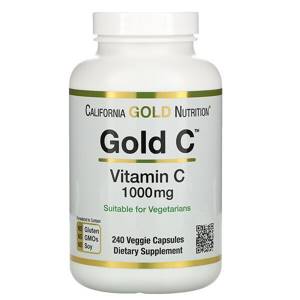Coffee Research Results
One study found that drinking a cup of coffee with a hamburger reduced the body's absorption of iron by 39%. Drinking tea, a known inhibitor of iron absorption, with the same meal reduced iron absorption by as much as 64%.
Another study found that drinking a cup of instant coffee with bread reduced iron absorption by 60–90%. Moreover, the stronger the coffee or tea, the less iron is absorbed.
However, caffeine itself is not the primary substance that interferes with iron absorption.
One study found that caffeine itself actually binds to only 6% of dietary iron. Given that this is a relatively small amount, other factors must influence iron absorption. Additionally, regular coffee consumption may also affect iron accumulation levels.
A large study found that among older adults, each weekly cup of coffee was associated with 1% lower ferritin levels. This is a protein that indicates iron storage levels.
However, it's important to remember that the effects of coffee and caffeine on iron absorption seem to depend on when you drink your coffee. For example, drinking coffee an hour before meals did not affect iron absorption.
The benefits and harms of coffee
“Drinking coffee is harmful!” - some opponents of this drink categorically state. However, not everything is so simple. Coffee contains many antioxidants and an impressive amount of other substances beneficial to humans, and the latest research convinces that much of what we knew about this drink is nothing more than a myth. Here are some facts about the health benefits of this flavorful black drink.
Gives energy and makes us smarter
Coffee helps people feel more alert and increases energy levels. This is because the product contains a stimulant known as caffeine. By the way, it is the most popular psychostimulant in the world. After a cup of drink, caffeine is absorbed into the blood, and along with it enters the brain, where it blocks the work of the neurotransmitter adenosine. When this happens, the body's levels of other neurotransmitters, norepinephrine and dopamine, rise sharply, causing neurons to fire.
Many clinical studies show that coffee improves overall brain functioning, including improving memory and mood, increasing alertness, and having a beneficial effect on cognitive function.
Helps burn fat
Did you know that almost all weight loss medications contain caffeine? And all because it is one of the few natural substances that promote fat burning. Studies have shown that caffeine can speed up metabolism by 3-11%. However, there is a caveat: if you drink too much coffee, this effect weakens.
Speaking on the topic of excess weight, one cannot help but recall green coffee, which contains particularly high portions of chlorogenic acid, an antioxidant that promotes weight loss.
Improves performance
Caffeine increases adrenaline levels in the blood. This hormone is necessary for a person during intense physical activity. Caffeine breaks down fat deposits to provide additional energy. Given these abilities of caffeine, it is not surprising that coffee benefits people who work physically. A cup of the drink, drunk about 30 minutes before a workout in the gym, can increase physical endurance by 11-12%.
Source of Important Nutrients
Coffee is much more than just a flavorful drink. Its grains contain many nutritional components. A cup of the drink contains approximately 11% of the daily value of vitamin B2, 6% of vitamin B5, about 3% of manganese and potassium. And magnesium and vitamin B3 in a cup of coffee are contained in an amount corresponding to two percent of the recommended daily portion.
Reduces the risk of diabetes
Type 2 diabetes mellitus is a serious problem for humanity. Today, about 300 million people worldwide suffer from this disease. And this number continues to grow. But research increasingly suggests that regular black coffee can prevent this disease. Scientific research suggests that individuals who consume this drink are approximately 23-50% less likely to develop diabetes. Scientists continue to analyze why this happens.
Protects against Alzheimer's and Parkinson's diseases
Alzheimer's disease usually affects people over 65 years of age. Unfortunately, scientists have not yet found a cure for this neurodegenerative disease. But there is good news. Proper nutrition, exercise and... coffee can prevent the development of the disease. Coffee drinkers are almost 65% less likely to suffer from Alzheimer's disease. The figures are approximately the same for Parkinson's disease. However, scientists note that decaffeinated coffee does not have a protective effect against these diseases.
Helps liver function
The liver is an extremely important organ in the human body. It has hundreds of functions. But cirrhosis and other diseases can deprive this organ of its ability to play its unique role. Not only medications, but also a cup of coffee will help protect the liver. Fans of this aromatic drink are almost 80% more protected from the risk of cirrhosis and other painful changes in liver tissue.

Makes us happier
Scientists from Harvard University have calculated that women who drink 3-4 cups of coffee a day are 5 times less likely to suffer from depression. Another study found that coffee also reduces suicide rates. Biologists explain this phenomenon by the ability of caffeine to activate the body’s production of hormones responsible for good mood and positive thinking.
Reduces the risk of certain types of cancer
Cancer is accompanied by the uncontrolled growth of degenerated cells in the body. Coffee, according to the results of clinical experiments, can prevent this process. At least when it comes to malignant tumors in the liver and colon. Scientists made similar conclusions after observing almost 500 thousand people.
Extends life
Considering that coffee drinkers are less likely to suffer from many serious diseases, we can say that this drink prolongs life. But there are other, more convincing facts. Researchers have calculated that the mortality rate among male coffee drinkers is approximately 20% lower than that of those who gave up this aromatic drink. Among female espresso drinkers, the mortality rate is 26% lower.
The most important source of antioxidants
This may seem strange, but at least that's what scientists say. Coffee contains more antioxidants than vegetables and fruits. This gives grounds for some researchers to classify this product as one of the healthiest drinks.
Substances that affect iron absorption
Caffeine isn't the only substance known to interfere with iron absorption.
Polyphenols found in coffee and tea are considered major inhibitors of iron absorption.
These include chlorogenic acid, which is found mainly in coffee, cocoa and some herbs. In addition, tannins contained in black tea and coffee interfere with the absorption of iron. These compounds bind to iron during digestion, making it difficult to absorb.
Their effect on iron absorption in the body depends on the dose. This means that iron absorption decreases as the polyphenol content of the food or drink increases.
In one study, consuming beverages containing 20–50 mg of polyphenols per serving reduced the absorption of iron from bread flour by 50–70%. Meanwhile, drinks containing 100–400 mg of polyphenols per serving reduced iron absorption by 60–90%.
Another study found that consuming 5 mg of tannins inhibited iron absorption by 20%, while 25 mg of tannins reduced it by 67% and 100 mg by 88%.
Drug interactions
In a situation where ascorbic acid therapy needs to be supplemented with other vitamins and minerals, compatibility and interaction between substances determine the possibility and method of use.
A beneficial combination of components can improve absorption, increase activity and enhance the final effect. Well-known facts: taking vitamin C helps the absorption of iron, and to strengthen bone tissue it is better to take calcium and magnesium at the same time.
Incompatible drugs may interfere with absorption, inactivate each other, increase side effects, or interact, leading to the formation of toxic metabolites. For example, you cannot combine iron and copper, cyanocobalamin and retinol.

California Gold Nutrition, Gold C, Vitamin C, 1000 mg, 240 Vegetarian Capsules
1 158 ₽
Buy at a discount
Data on which vitamins and minerals vitamin C is not compatible with and which it is compatible with is presented in the table below.
| Combination | Substances |
| good |
|
| Incompatible |
|
| Neutral |
|
If incompatible substances still need to be taken on the same day, you should take a break between them of at least 3-4 hours.
The combination of vitamin C with other vitamins must be taken into account even when preparing a diet, otherwise the beneficial compounds contained in food will not be utilized by the body.
More information about the sources of natural ascorbic acid can be found in the video available at the link:
Which foods have the most vitamin C?
Conclusion: to drink or not to drink coffee
Several studies show that coffee and caffeine are not associated with iron deficiency in healthy people without risk of iron deficiency.
Many people get enough iron from the food they eat. Regularly getting enough vitamin C and heme iron from meat, poultry and seafood can help overcome iron suppression from coffee and tea.
However, this may not be the case when polyphenols are consumed in very large quantities. For those at risk of iron deficiency, high consumption of coffee and tea may not be the best idea.
Who is at risk:
- The risk group includes women of childbearing age.
- Infants and young children.
- People with poor or restrictive diets, such as vegetarians.
- People with certain medical conditions, such as inflammatory bowel disease.
However, these groups do not have to give up coffee and caffeine completely.
Compatibility of vitamins: when there is no agreement among friends...
Multivitamins, looking kindly at us from TV screens and magazine pages, are traditionally considered one of the safest drugs. But after getting acquainted with their composition, which takes up almost half a page of instructions, the question involuntarily arises: do so many components combine well in one tablet?
From simple to complex
For many years, when Soviet pharmaceuticals produced truly Soviet vitamins, the problem of compatibility of micronutrients - vitamins and elements - did not exist. The famous white or yellowish Revita dragees, which children ate by the handful, easily combined vitamins A, B1, B2, C and did not cause unnecessary anxiety. Hexavit, undevit and dekamevit, containing 6 and 11 vitamins respectively, became the pinnacle of Soviet pharmaceutical thought. And they also left no doubt about the absence of chemical reactions between the ingredients.
But as soon as the Iron Curtain opened and allowed Western drugs into domestic pharmacies, the situation changed. The market is flooded with health vitamins generously flavored with microelements. The number of components in the most saturated complexes exceeds three dozen. And not only chemists, but also citizens who remember the periodic table only from school textbooks began to wonder: how do twenty or thirty ingredients of one pill find a common language? And I must admit, it was not in vain that I thought about it. It turns out that with micronutrients everything is like with people: there are both friends and enemies who do not live in the same house.
"Vitamin" interaction
Vitamins and minerals can react with each other at different points along the way from the factory floor to our bloodstream.
Pharmacists have identified three main types of reactions:
- pharmaceutical interaction
occurring at the time of creation of the complex drug and during its storage, i.e. outside the body; - pharmacokinetic interaction
. This reaction may occur as the combination drug is absorbed, distributed, or eliminated from the body. As a result, some substances are absorbed much longer than expected, others are partially lost or even completely eliminated from the body; - pharmacodynamic interaction
is the most complex and unpredictable reaction, which is expressed in the influence of one vitamin or element on the pharmacological effect of another.
There are two main types of pharmacodynamic effects. The first - synergistic - is expressed in enhancing the effect of one micronutrient at the expense of another. The second, antagonistic effect is the weakening or even complete disappearance of the pharmacological effect due to an unsuccessful combination.
By the way, an antagonistic reaction always has a negative meaning, reducing the effectiveness of the drug. And drug manufacturers have learned to use synergistic drugs for good, combining synergists and thus increasing absorption.
Good and evil neighbors
Pharmacists have already identified several dozen typical reactions between different vitamins and microelements. Here are the most egregious examples of interaction.
Zinc, a common component of multivitamin preparations, is an active competitor of iron and calcium. The combination of these three elements will be inferior due to reduced zinc absorption. In addition, the same zinc can form strong complexes with folic acid - the appearance of such “by-products” is also fraught with a decrease in the effectiveness of zinc.
Another pair that cannot divide their spheres of influence is calcium and iron. When used together, the latter is absorbed almost twice as poorly as when used separately.
Interesting events can also occur with B vitamins. Thus, vitamin B12 (cyanocobalamin) can intensify an existing allergy to vitamin B1. In addition, up to a third of the vitamin B12 contained in multivitamins is converted into harmless, but absolutely useless metabolites.
To balance the scales, we also note synergistic reactions. Strengthen each other's action:
- vitamin E and selenium;
- vitamin C and iron;
- vitamin B6 and magnesium;
- vitamin D and calcium and some others.
Examples of “beneficial” interactions can be observed firsthand - many vitamin preparations began to be produced in pairs. For example, iron supplements often contain ascorbic acid, and the popularity of the magnesium-B6 combination has reached global proportions.
The benefits of synergy are clear. How do you overcome the harm of antagonism in multivitamin complexes?
Technologies of the XXI century
Drug manufacturers are making a lot of efforts to get around sharp corners and “combine the incompatible.” Special technologies are used for this. Their goal is to build boundaries between the warring parties and prevent clashes.
The easiest way to achieve this is to physically separate incompatible micronutrients. By enclosing one of the ingredients in a microcapsule or microgranule, you can sleep peacefully and not be afraid of surprises. However, this method only prevents pharmaceutical effects. During absorption, the “wall” between micronutrients is destroyed, and they can enter into a pharmacokinetic or pharmacodynamic reaction.
For such cases, there is another method of “reconciliation” - to force the “conflicting neighbors” to be released at different times. Controlled release technologies allow components to be absorbed in an orderly manner.
The vast majority of modern multivitamins are produced using separation technologies. And loud statements from manufacturers about solving the problem of incompatibility in huge complex drugs are confirmed not only by certificates of conformity. Almost all modern vitamins are products of large companies and are produced in accordance with GMP requirements - trust in these standards is rock-solid.
Therefore, pharmacists not only with a clear conscience offer “multi-tiered” vitamins to clients, but also buy them for their children and loved ones. And only my inner pharmaceutical voice sometimes timidly whispers that sometimes less is more...
Marina Pozdeeva
Photo thinkstockphotos.com
Recommendations for drinking coffee and caffeinated drinks
- Drink coffee or tea between meals.
- Wait at least an hour after eating before drinking coffee or tea.
- Increase your heme iron intake through meat, poultry, or seafood.
- Increase your vitamin C intake with meals.
- Eat foods fortified with iron.
- Eat foods high in calcium and fiber, such as whole grains, separately from foods rich in iron.
This will help limit the effect of coffee and caffeinated drinks on iron absorption.
Effect on hemoglobin levels
There are two points of view on the ability of the drink to increase hemoglobin. Both of them have a right to exist.
- Any alcohol increases hemoglobin due to blood thickening. Beer contains ethyl alcohol: a half-liter bottle is 20-40 g of ethanol. Therefore, when consumed, like any other alcoholic drink, beer first thins the blood and then thickens it. Due to this, the hemoglobin concentration rises.
- Only the dark variety is useful for anemia. Dark beer initially contains a large amount of beneficial vitamins, iron and other minerals. Iron is the most active participant in the process of hematopoiesis and the main component of hemoglobin. Light beer goes through several filtrations, as a result of which it acquires transparency and light color, but at the same time loses many useful substances, including iron. And the dark contains a lot of iron, which, oxidizing other substances, gives the product a rich color and tart taste. Non-alcoholic beer is also not suitable for this purpose.
Proponents of the second point of view call for increasing iron levels through regular consumption of dark beer.
Is it possible to drink when the level is low?
Yes, you can. Provided that it is a natural, unfiltered and unfortified product. Dark beer can really affect the problem of anemia.
But this cannot be turned into a “course of treatment” for the following reasons:
- Determining the dose and duration of a course to increase hemoglobin levels with dark beer is very difficult. Each body reacts differently to alcohol consumption. And if for one person half a liter of the drink, drunk once a day, is a healing dose, then for another this dosage causes intoxication.
- Not every drink lover is able to limit himself in beer, even having an idea of his physiological norm. And after exceeding the dosage and with frequent use, ethanol gives the opposite effect to health: alcohol destroys the main blood cells, red blood cells, and at the same time reduces hemoglobin, which is part of red blood cells.
- Along with beer, a snack that is not very healthy is often consumed, which can negate the therapeutic effect of a high-quality drink:
- salted nuts, chips, crackers;
- salted dried fish;
- smoked products
- snacks high in trans fats.
Can it be used at high levels?
Elevated hemoglobin is not an indicator of a good level of health, but, on the contrary, a sign of existing blood pathologies. Large numbers most often indicate diseases such as:
- hypertension;
- thrombophlebitis;
- varicose veins, etc.
All of them are harbingers of such deadly diseases as cerebral stroke, myocardial infarction, etc.
Consuming even dark, that is, good for the blood, beer, hypertensive patients or other patients with pathologies of the circulatory and cardiovascular systems aggravate health problems.











